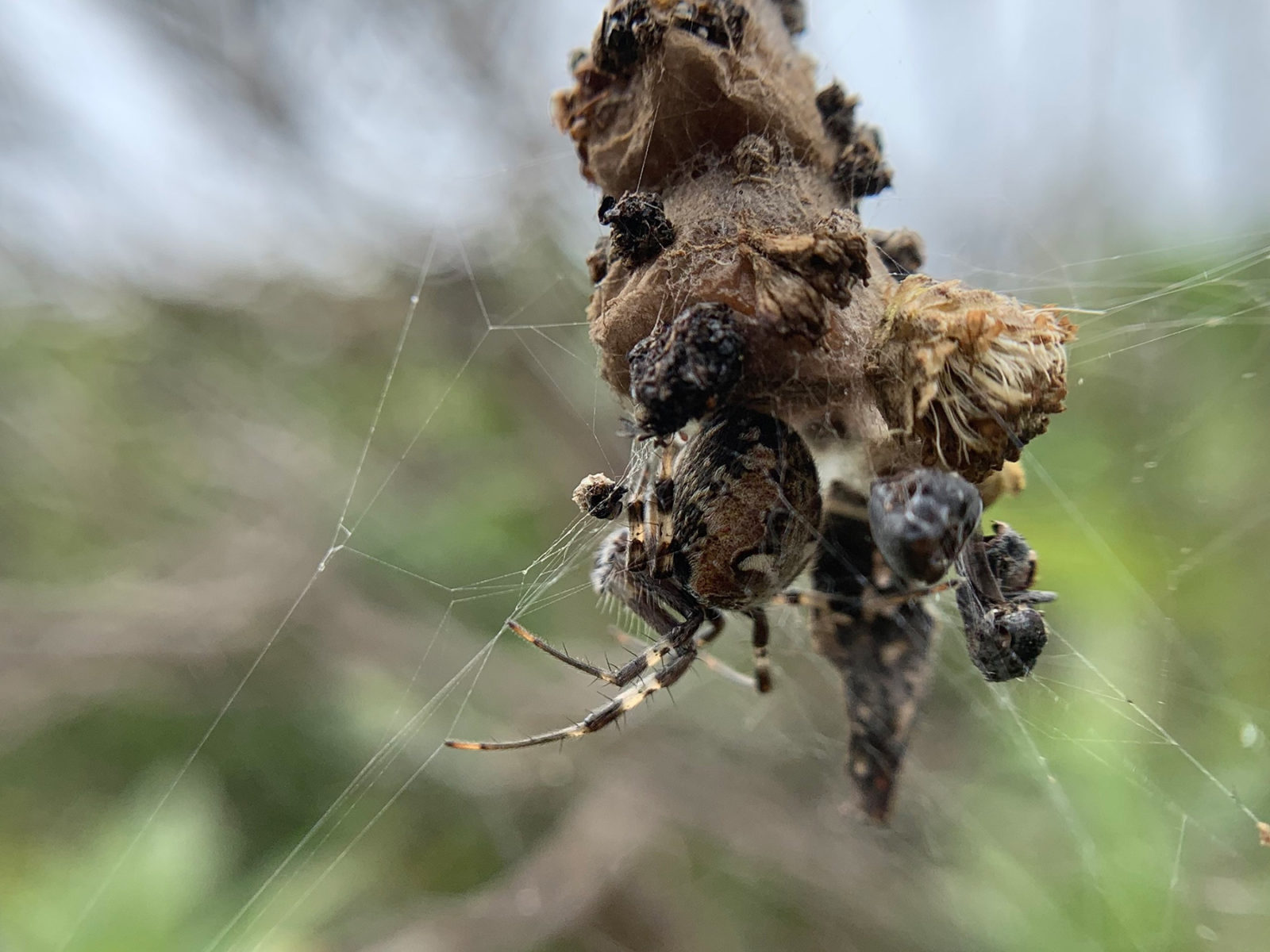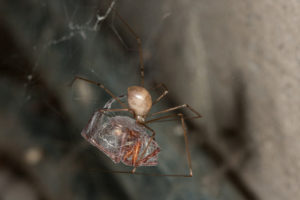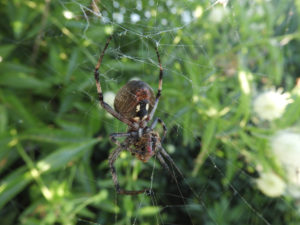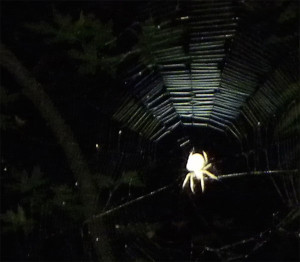I saw a bunch of spiders hanging from structures in the middle of their webs. What are they and why do they do that?
Looks like you’ve stumbled across one of the more interesting web builders of the Bay Area, the spiders of the genus Metepeira! Not only are members of this genus native to California and much of western North America, they have unique webs that are a bizarre mash-up of style and structure. If these spiders were chefs, I’m certain they’d be cooking fusion cuisine. As a bonus, they would also look cute in little toques.
Before we move on, I’ll just let you know that identifying spiders to the species level is very difficult. It usually involves peeking at the poor arachnid’s genitalia through a microscope and following descriptions like “The embolus curls almost 180° clockwise around a reduced or fleshy terminal apophysis,” (Piel, 2001) so unless otherwise noted, I’ll be discussing the genus as a whole.
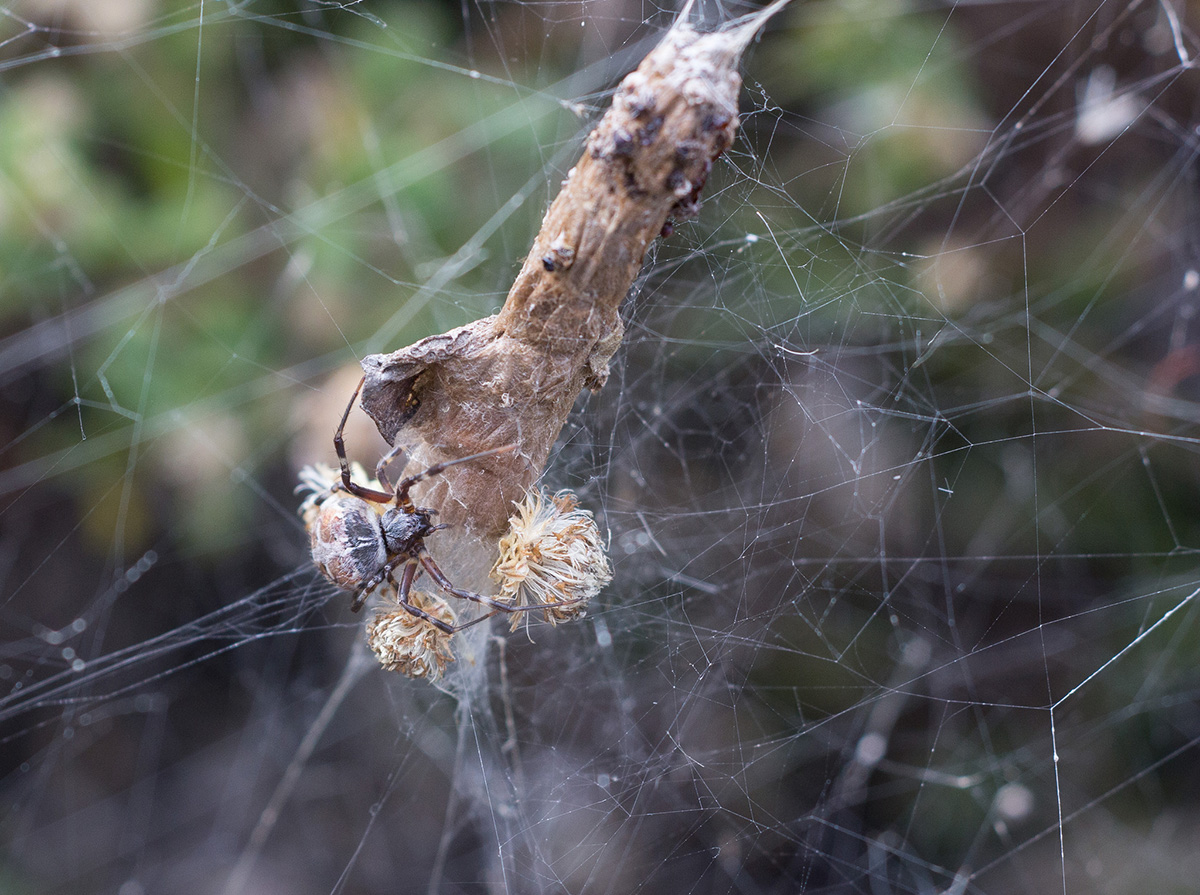
All spider webs are, to me, amazing. That a tiny organism with an infinitesimally small brain is able to exude one of the strongest materials on Earth out of its rear end and then use said material to create structures of incredible complexity, utility, and beauty is miraculous. And it’s even able to do this without referring to any books or Wikipedia. The Metepeira spiders take their web complexity up a notch with not one or two but three different structures.
The most salient structure of a Metepeira’s web is the tube-shaped retreat. Typically constructed of leaves, insect parts, and other detritus, this retreat (I’m sorry there isn’t a more fun technical term, but this is all I could find) is suspended by a complex, three dimensional tangle of silk which is termed a “barrier web” in R.J. Adams and Tim D. Manolis’s Field Guide to the Spiders of California and the Pacific Coast States. Finally, and it can sometimes be hard to make out, the Metepeira weaves a pretty standard orb web among the barrier web (see below). Orb webs are pretty much what we think of when we think of spider webs: two dimensional, constructed of many spokes radiating off a central hub, with a spiral of sticky silk holding it together. Generally, the spider hides out in its retreat until it detects vibrations from its orb web via signal lines. It then dashes out to subdue its prey with a bite of venom and a shroud of silk.
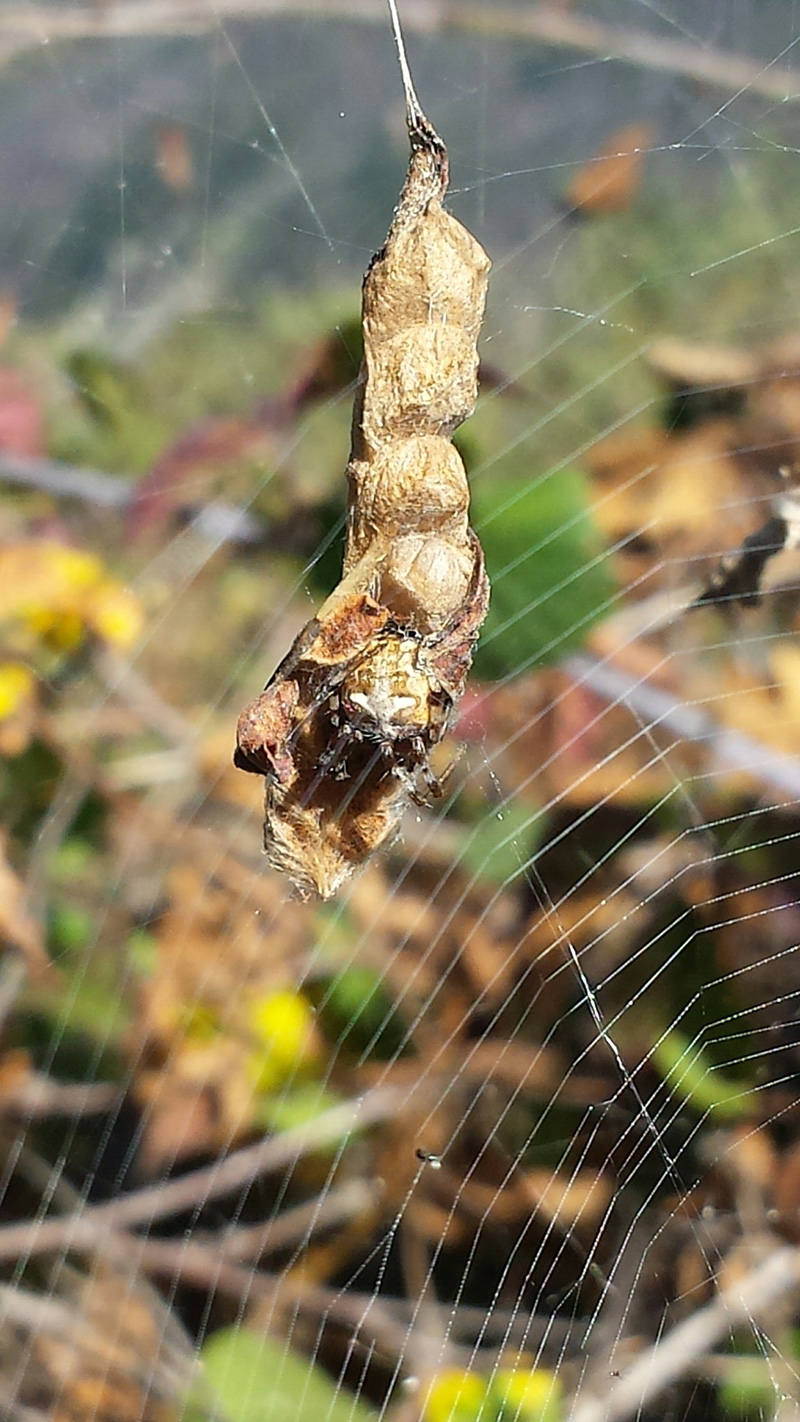
Investigate small bushes and shrubs in the Bay Area (especially coyote brush near bodies of water, I’ve found) in late summer and fall and you’re likely to spot at least one or two Metepeira webs on the same plant. These spiders are pretty gregarious, and at least one local species, Metepeira spinipes, is known to aggregate in large colonies. In their 1979 Habitat Structure and Colonial Behavior in Metepeira Spinipes, Uetz and Burgess tell us that in these colonies, all of the barrier webs (called “space webs” by these authors, a rad term) are interconnected, but each individual spider has its own retreat and its own orb web. These colonies, they hypothesize, might reduce overall time spent maintaining webs and “facilitate” the selection of mates. Intriguingly, they conclude that “The combination of solitary and colonial behaviors exhibited by this species suggests that it may represent an intermediate stage in the evolution of social behavior in orb-weaving spiders.”
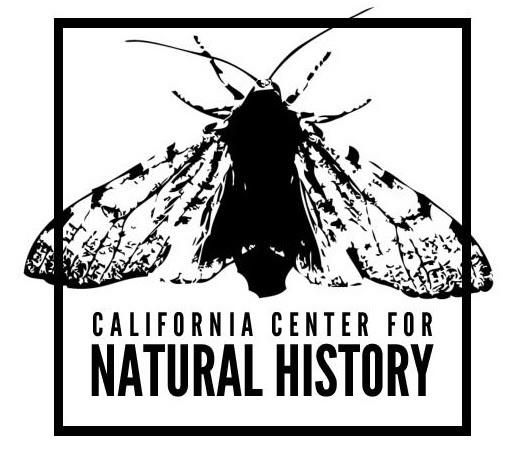
Ask the Naturalist is a reader-funded bimonthly column with the California Center for Natural History that answers your questions about the natural world of the San Francisco Bay Area. Have a question for the naturalist? Fill out our question form or email us at atn at baynature.org!

